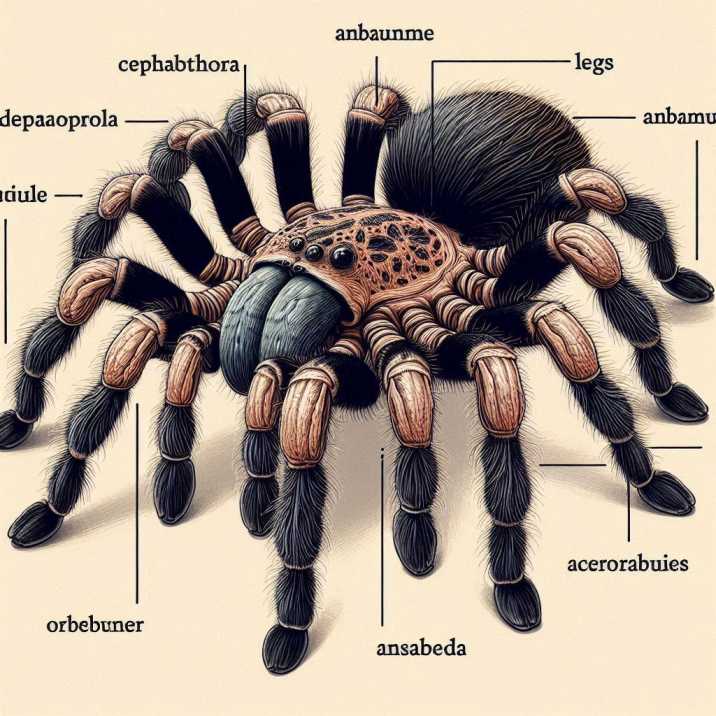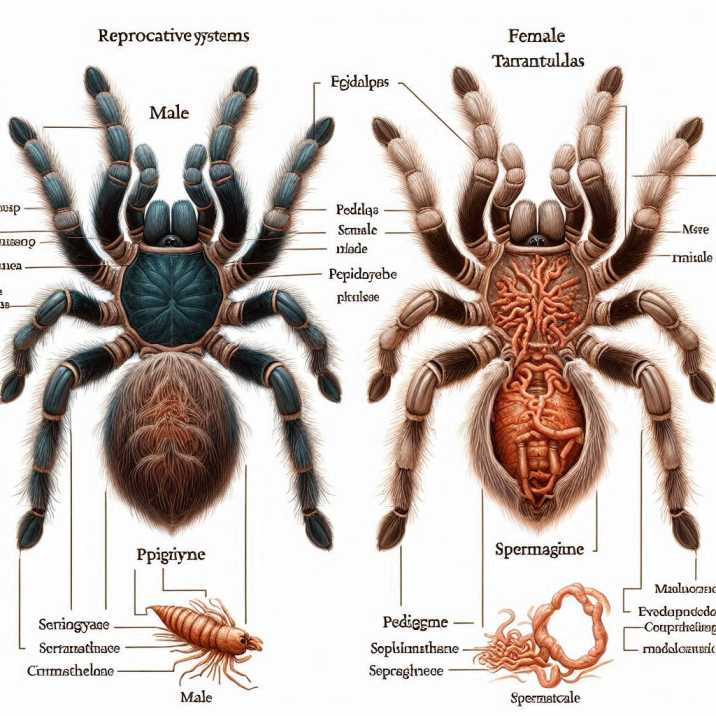Introduction
Table of Contents
Tarantulas are fascinating creatures that often spark curiosity and sometimes fear. These large, hairy spiders are known for their unique appearance and intriguing behaviors. One common question that arises is whether do tarantulas have clits? Understanding tarantula anatomy can help us answer this question and provide insights into their biology. In this article, we’ll explore the anatomy of tarantulas, focusing on their reproductive systems, and see if we can uncover the truth behind this intriguing question.

Table of Contents
- What Are Tarantulas?
- An Overview of Tarantula Anatomy
- External Anatomy
- Internal Anatomy
- Tarantula Reproductive System
- Male Reproductive Anatomy
- Female Reproductive Anatomy
- Do Tarantulas Have Clits?
- Tarantula Behavior and Reproduction
- Conclusion
- FAQs about Tarantula Anatomy
What Are Tarantulas?
Tarantulas are a group of large, hairy spiders belonging to the family Theraphosidae. They are found in various regions across the world, including the Americas, Africa, and Asia. These spiders are known for their impressive size, with some species having leg spans that can reach up to 11 inches.
An Overview of Tarantula Anatomy
External Anatomy
Tarantulas have a distinct external anatomy that sets them apart from other spiders. Their bodies are divided into two main parts: the cephalothorax and the abdomen. The cephalothorax contains the spider’s eyes, mouthparts, and legs, while the abdomen houses the digestive and reproductive organs.
Key Features of External Anatomy:
- Eyes: Tarantulas have eight small eyes arranged in two rows.
- Mouthparts: They have strong fangs used for hunting and defense.
- Legs: Tarantulas have eight legs, each covered with sensory hairs.
Internal Anatomy
The internal anatomy of tarantulas includes various organs essential for survival and reproduction. Some of the key internal organs include the heart, lungs (book lungs), and digestive system.
Key Features of Internal Anatomy:
- Heart: Tarantulas have a tubular heart that pumps hemolymph (spider blood) through their bodies.
- Book Lungs: These specialized structures help in respiration.
- Digestive System: Tarantulas have a simple digestive system that processes their prey.
Tarantula Reproductive System
The reproductive system of tarantulas is quite unique and differs significantly between males and females.
Male Reproductive Anatomy
Male tarantulas have specialized organs called pedipalps located near their mouthparts. These structures are used to transfer sperm to the female during mating. Males also have sperm webs which they use to transfer sperm to their pedipalps.
Female Reproductive Anatomy
Female tarantulas have a structure called an epigyne located on the underside of their abdomen. The epigyne is used to receive sperm from the male during mating. Females also have spermathecae, where they store sperm until they are ready to fertilize their eggs.

Do Tarantulas Have Clits?
Now, let’s address the main question: do tarantulas have clits? In mammals, the clitoris is a sensitive organ associated with female genitalia. Tarantulas, being arachnids, have a very different reproductive system compared to mammals. They do not have a clitoris. Instead, their reproductive anatomy consists of structures like the epigyne and spermathecae in females, and pedipalps in males.
Key Points:
- No Clitoris: Tarantulas do not have a clitoris as seen in mammals.
- Unique Anatomy: Their reproductive organs are adapted for their specific mating behaviors.
Tarantula Behavior and Reproduction
Tarantulas have fascinating reproductive behaviors. Males typically perform a courtship dance to attract females. During mating, the male transfers sperm to the female using his pedipalps. After mating, the female lays eggs and guards them until they hatch.
Key Reproductive Behaviors:
- Courtship Dance: Males perform specific movements to attract females.
- Sperm Transfer: Males use pedipalps to transfer sperm.
- Egg Protection: Females guard their eggs until they hatch.
Conclusion
Tarantulas are fascinating creatures with unique anatomical and reproductive features. While they do not have clits like mammals, their reproductive system is perfectly adapted for their needs. Understanding tarantula anatomy helps us appreciate these remarkable spiders even more. Whether you’re a curious student or an enthusiastic arachnologist, there’s always more to learn about the amazing world of tarantulas.
FAQs about Tarantula Anatomy
1. Do tarantulas have a heart? Yes, tarantulas have a tubular heart that pumps hemolymph throughout their bodies.
2. How do tarantulas breathe? Tarantulas breathe using specialized structures called book lungs.
3. What is the purpose of a tarantula’s pedipalps? Pedipalps are used by male tarantulas to transfer sperm to the female during mating.
4. How do female tarantulas store sperm? Female tarantulas store sperm in structures called spermathecae until they are ready to fertilize their eggs.
5. Do tarantulas have good eyesight? Tarantulas have poor eyesight compared to other animals. They rely more on their sensory hairs to detect their environment.
